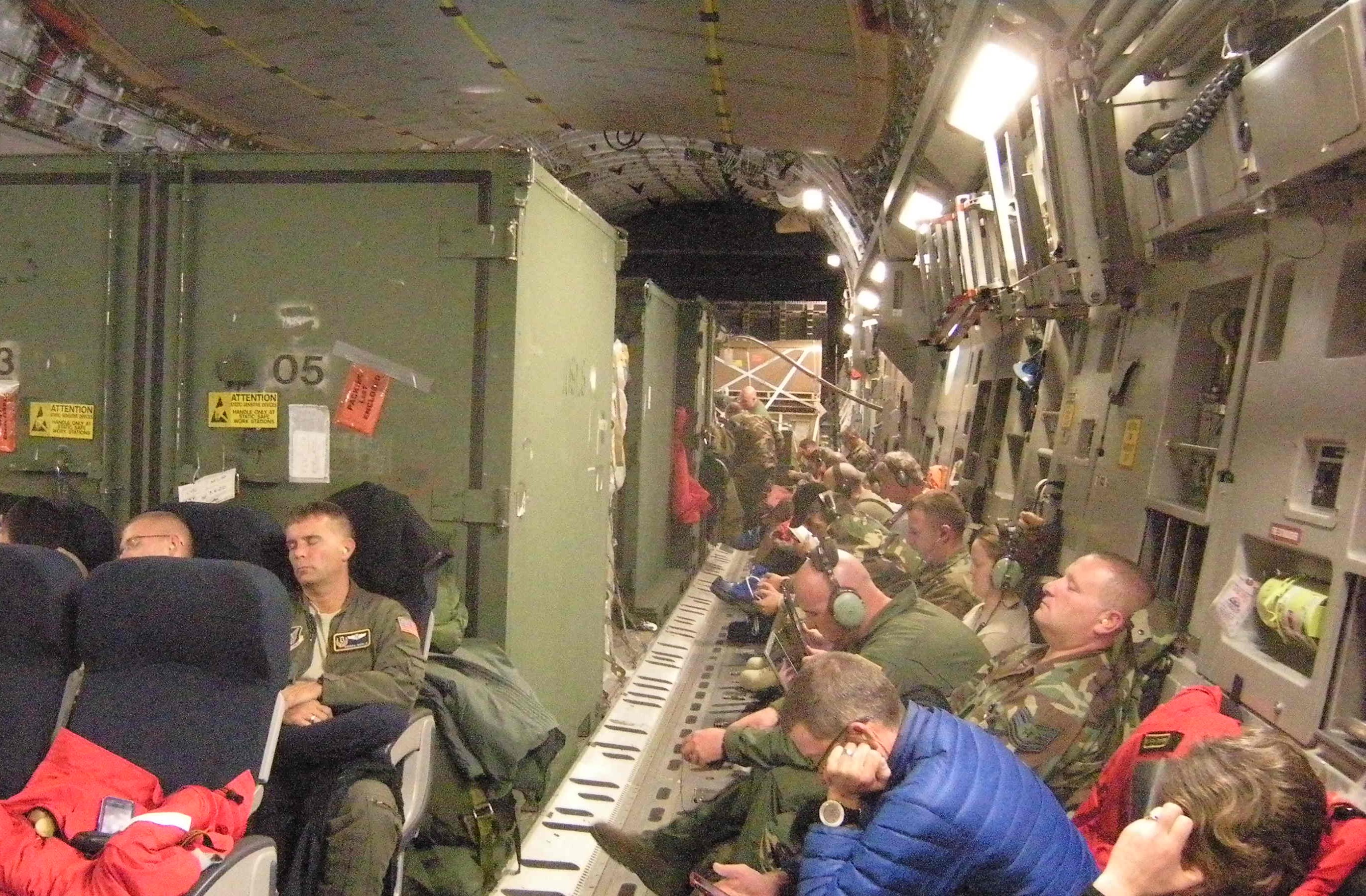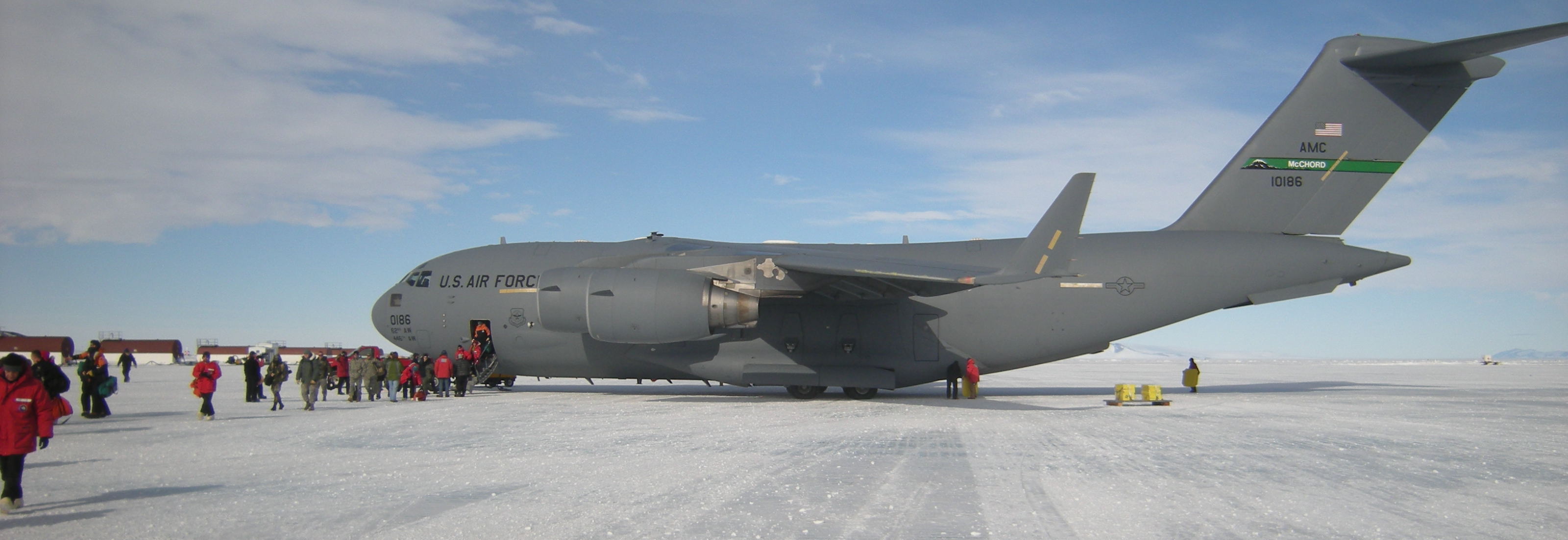Transport to the ice

Wednesday morning started with a 5AM taxi ride to the US Antarctic Program's processing center at the Christchurch airport, where we had to repack our bags and put on our emergency cold weather gear for the flight. Our plane was the C-17 Globemaster III, a large military transport plane more commonly used to deploy troops around the world. The C-17 is the primary wheeled jet aircraft the US Antarctic Program (USAP) uses to cross the southern ocean, and the flight from Christchurch to McMurdo takes about five hours. The other workhorse of the USAP is the LC-130 Hercules, which is a ski-equipped prop plane - flights on the Hercules take 3 hours longer, which makes for a long, rattling flight.

The interior of the C-17 is spartan, all wires and insulation, with a few 'aircraft-style' seats in the center and jump-seats along the walls. There are no windows, and it is loud, so I wore earplugs most of the time. Unlike most flights though, you can wander up to the flight deck and see the view from the cockpit. As we approached McMurdo Station, I went up and checked out the pack ice conditions on the Ross Sea, and I could clearly see the dimensions of the polynya off of our sampling are near Cape Royds. I could also see the Erebus Volcano steaming away in the background.

There are three runways available for use at McMurdo, depending on the time of year and on your aircraft. We landed on the sea ice runway, which is available through late spring when the sea ice gets too thin to support a three hundred thousand pound aircraft. For ski-equipped aircraft there is Williams Field, which is a snow runway. Williams field is actually on the Ross Ice Shelf, so the ice there is a hundred foot thick floating glacier covered with a layer of insulating snow. The third runway is Pegasus Field, a white-ice runway located some distance from town.

Landing on the ice didn't seem much different than landing at Lindberg Field in San Diego, which really boggles the mind, as I still have no idea how we actually came to a stop. But the door opened up and there we were in the bright Antarctic afternoon. The weather was cold and windy, but the sunshine felt great. We were loaded into a large tire vehicle known as a Delta and driven across the ice, up the hill, and into McMurdo, known locally as Mac-town.